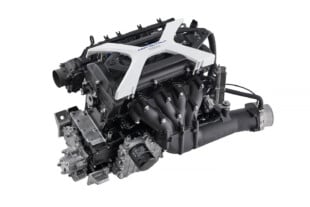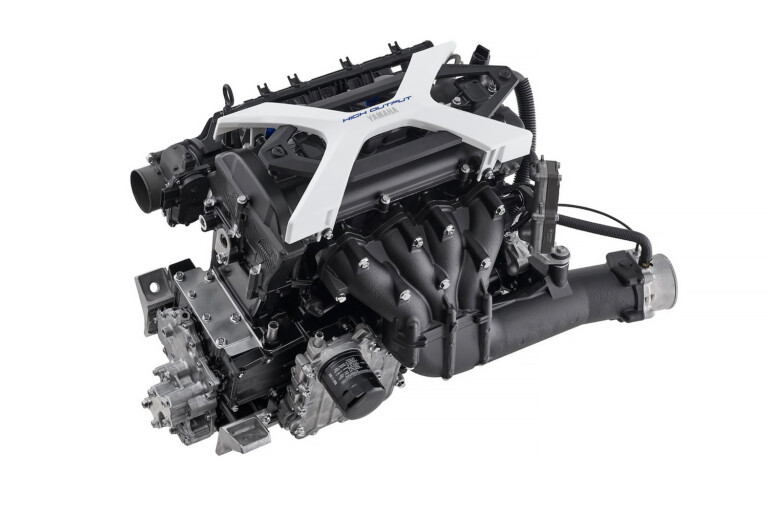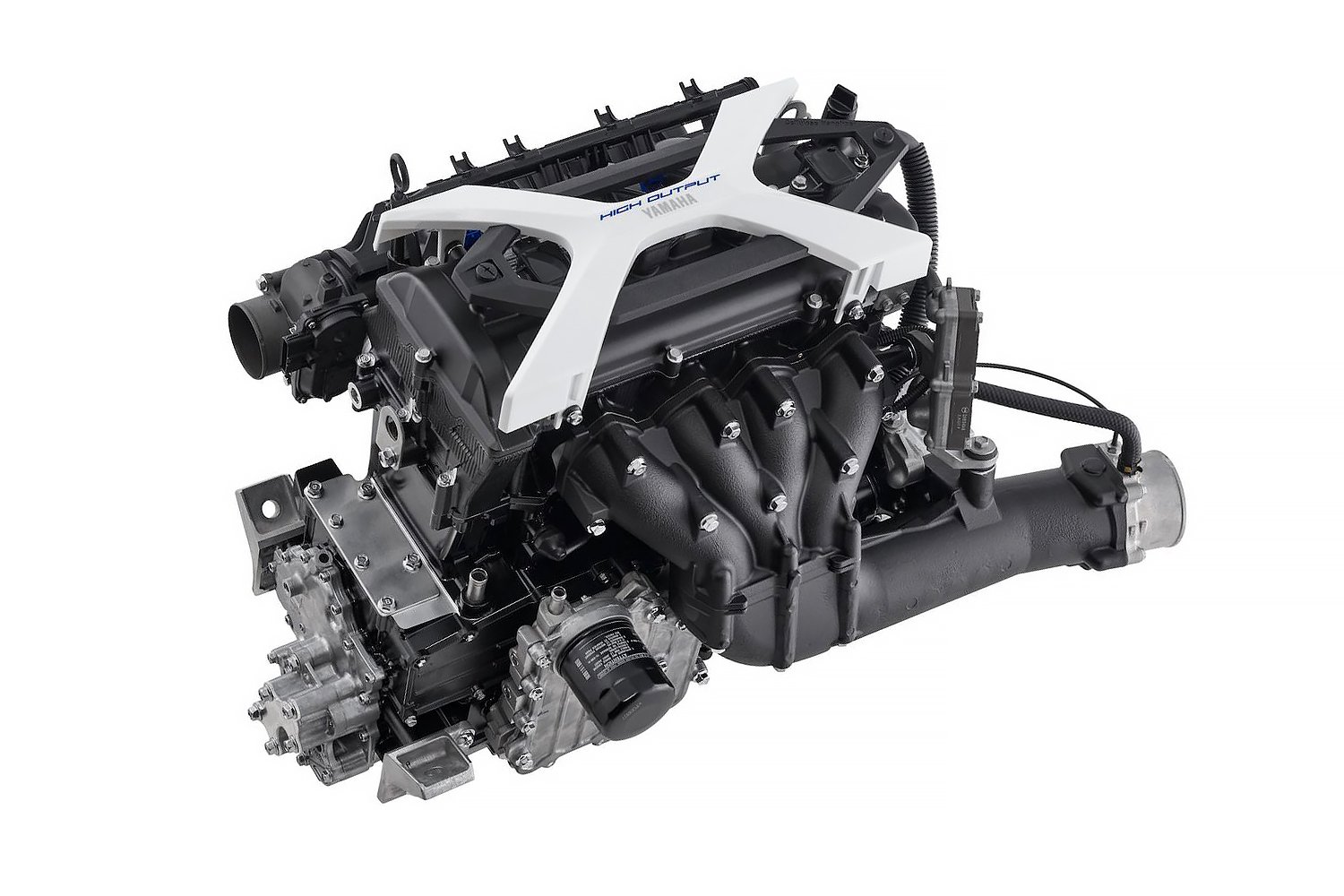Photo Update: Just after this story went live, engine builder Ted Wenz and current owner Eric Haga forwarded additional photos of the cylinder heads and complete engine, including one when the engine was originally built in the ’70s. See the new photos at the bottom of this post.
One of the most exotic small-block Chevy engines ever built will be back on the track this year, if all goes well.
Just take a look at the video above where the little Mouse screams quite forcefully for a nearly 45-year-old bullet. Note the position of the trumpets and slide valves for the Lucas fuel injection system. They’re on the outside of the cylinder head, and there’s just a flat plate where a traditional intake manifold would normally reside.

The heads on this unique SBC started out as -492 castings but were heavily modified to position the fuel injection and intake ports on the opposite side of the valve covers.
This unique interpretation of a Chevy 23-degree head came from one-time F1 driver and longtime Formula 5000 racer Gus Hutchison. Working out of Hutchison Racing Engines–a shop he established in Dallas, Texas, in 1972 — Hutchison completely reworked a set of -492 iron castings by milling out new intake ports on the opposite side of the cylinder head and positioning them between the exhaust ports.
“The conventional setup was Lucas injection with downdraft butterfly valves,” explains Ted Wenz of Savannah Race Engineering in Georgia, the shop that upgraded the restored engine and dyno’d it. “[Hutchison] reasoned, much like Cosworth had done with the MAE motors, that if you downdrafted the inlet port you could find some flow.”

Here’s an example of Cosworth MAE cylinder heads from the ’60s that could have been the inspiration for Gus Hutchison to modify the Chevy heads. Note the stock position of the intake ports (arrows) but then Cosworth redirected the intake ports for a straighter, more direct path to the intake valve. Remember, this is all before CNC machining, 3D printing and SolidWorks design software.
As noted in our review of “Rush,” the MAE designation stood for “modified Anglia engine,” and as seen in the accompanying photos, the intake and exhaust ports are on the same side of the cylinder head. This is not an unusual port arrangement–as it’s quite common in many I4 and straight-6 applications, but Cosworth redirected the intake port or stood it up to give the airflow a more direct shot at the back of the intake valve. This is the same basic strategy employed by any cylinder head specialist when they “raise the roof” of the port. (See our story on Pro Stock engines to see how this dynamic affects cylinder block dimensions and intake manifold design.)
While Hutchison designed and built the engine in 1972, it ran only one Formula 5000 race at Road America the following year, according to the engine’s current owner, Eric Haga. Also a longtime racer who once read about the engine, he visited Hutchison in 2012 with hopes of gathering enough information to recreate it. Hutchison surprised Haga by taking him out to a garage and offering the original hardware to him. A few components needed replacing during the restoration, and then it was shipped to Savannah’s shop.

This is a rather crude illustration but the yellow lines indicate a possible path for the new intake port while the black outline indicates the area that would be filled in.
“It was way down in power for the range that these cars run, around 400 horsepower,” says Wenz. “A good competitive Formula 5000 engine with Lucas is 540 or more. I did some flow work and found the sizings were deficient. 1.88-inch inlet slides just weren’t going to cut it in terms of cross sectional area if you wanted to put any taper in the inlet port.”
Wenz upped the compression and changed the cam timing, eventually hitting 508 horsepower at the end of the dyno test sessions.
“There’s probably more to go in that configuration,” says Wenz.
Right now there’s little background on the process used by HRE to build the cylinder head, but we compiled a few ideas.
“Basically he took at the the head from the chamber side and pointed at the roof of the port. Then he tried to figure out how he could bore through the valve spring area,” says Wenz. “I suspect they ran through a number of cylinder heads before they found a legitimate combination that would allow the valve spring seats and guides to still exist.”
Eventually, HRE found a path that would work and milled the Chevy heads, allowing the insertion of tubes that could be brazed at the water jackets and at the bowl above the valve seat. The stock intake port was then filled with epoxy or welded up.
“Then they could hand blend into the existing port,” says Wenz, adding that there are still some limitations to the design that could keep the motor from its full potential.
Here are two more views of the engine on the Savannah Race Engineering dyno. One view shows more of the inlet ports under the slide valves, while the other shot shows the right-angle drive for the distributor and fuel metering. Note the throttle linkage and the clearance extensions for the headers.
Aside from the heads, the engine is a conventional Chevy 302 V8 for its day with a 4.020 x 3.000 bore and stroke for a final 304ci displacement. There is a cover for the lifter valley that allows for water circulation and supports the fuel metering distributor/control unit.
“There’s also some rather elegant throttle linkage so that both sides would have equal and proportional opening,” notes Wenz.
Soon after Haga started the engine project, an acquaintance informed him of the whereabouts of the original tub used in the engine’s lone race. Haga acquired it and started restoration work with a goal of racing in Formual 5000 vintage events in 2016.
“We’re going to run it this season as a tribute to Gus and the folks at HRE,” says Haga.

Here are two views of the HRE-modified cylinder head on the bench. Note the intake runner tubes brazed to the head where the openings were milled through the water jackets. On the opposite side, the stock intake ports were filled with epoxy.

The project started with a -492 23-degree Chevy casting. You can see the intake ports have a direct shot to the back of the valve.























